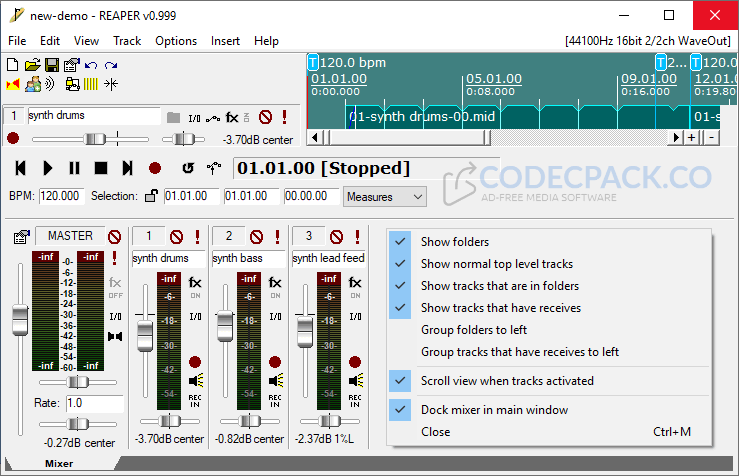
The number of students electing to use Reaper increased dramatically during the move to online instruction during the COVID-19 pandemic when many students moved home, losing access to our studios and their array of expensive hardware and software. and it has even become the choice of some students for projects in their senior seminar and Music Composition 1 and 2. However, since arriving in 2016, I have consistently used Reaper in Electronic Music Composition, a course focusing on the creative practice, as well as the history, of experimental work in electronic music (art, jazz, pop, and more).
Reaper daw version history pro#
Our Music Technology program here primarily teaches courses that rely heavily on Pro Tools, Logic, Ableton Live, and Max, which are the choice of tools for many professionals in the music industry. Then when I took a post as a professor at the University of Central Missouri, I found several students that did have some familiarity with it, and as I have encouraged its use, this number has increased and the application has entered the culture of our program. None of the students at USD had ever opened Reaper before my class.
Reaper daw version history software#
Then, in 2013, as instructor of digital audio composition at the University of San Diego, I began to use Reaper, initially for my students, because we required a reasonably priced but effective alternative to expensive software packages that would only run on newer computers and found I loved it.



A diehard Pro Tools, Logic, and Digital Performer user at the time, it held no appeal and I gave it little further attention once I returned home. I was first introduced to Reaper ( Reaper, a DAW by Cockos, is an acronym for Rapid Environment for Audio Production, Engineering, and Recording) while playing in multiple recording sessions in Berlin during the summer of 2009-in the home studio of Roy Carroll, then at Ausland, Loophole, Salon Bruit, and other venues/locations around the city.


 0 kommentar(er)
0 kommentar(er)
